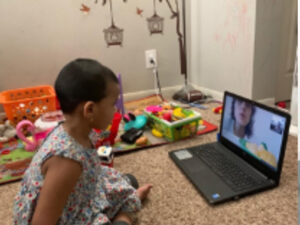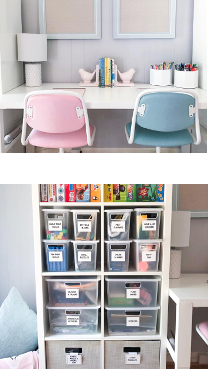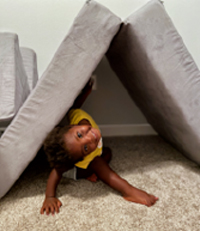Back to School: Expect the Unexpected

 2020 has not quite been the year we all expected! In the midst of this unanticipated pandemic both adults and kids alike have been challenged and stretched. At Pediatric Therapies, we frequently use the terms “expected” and “unexpected to help children navigate situations. This year has required us to expect the unexpected! Completing school at home- whether remote or on-line- is an unexpected new adventure for many of us.
2020 has not quite been the year we all expected! In the midst of this unanticipated pandemic both adults and kids alike have been challenged and stretched. At Pediatric Therapies, we frequently use the terms “expected” and “unexpected to help children navigate situations. This year has required us to expect the unexpected! Completing school at home- whether remote or on-line- is an unexpected new adventure for many of us.
Our first question is, “where do we start”? Whether you are balancing work from home, multiple kids doing school, or educating a child who has delays, these simple tips will help you get set for success!
1. Prepare a workspace
 (adapted from Bloom Family Designs)
(adapted from Bloom Family Designs)
- Create a school space in your home!
It can be just a simple table in the corner of the playroom or a kid’s desk beside your own work desk. Allow your child to help you pick out where in the house you create this school area and include them in designing the space. - Organization is key!
Find a system to help your kids know where to easily find things. A system that is easy to navigate will increase your child’s independence, reducing the need for your assistance. Teachers will appreciate the efficiency too! - Make it fun!
Create a place for your kids to display their artwork, find cozy spots to read, and set the tone for a productive day!
2. Create a daily schedule/ routine
This seems like a simple step for success, but it is crucial. Younger kids can use pictures, as a visual schedule, to lay out the day. Older kids can write out their daily plan in a notebook, a chalkboard or a dry erase board. Having a schedule will allow kids to feel in control of their day. As adults, we know how satisfying it is to cross that “to do” off our list. It’s the same for kids! Encourage your child to cross off each activity as they complete it and they will feel that same success! If you need assistance creating a schedule that fits your child, Teachers Pay Teachers and Pinterest have great ideas!
3. Provide frequent sensory input and movement
When planning out your day, try to incorporate a large movement break every 2-3 hours if possible. Provide sensory tools for your child to use more frequently. It’s easy to overcomplicate this step, but focus on finding simple games/activities that your child enjoys. Create an obstacle course, complete animal walks down the hallway, have a yoga pose competition, jump on a trampoline, build a fort, climb a tree, play catch, or have a dance party! Your child might also benefit from use of tactile fidget tools such as play dough, koosh balls, squeeze toys, textured materials etc…Having tactile tools available will help your child increase focus and engagement in class.
If you need help in this area, reach out to your therapist for ideas individual to your child.
4. Make learning fun!

Kids of all ages learn through PLAY. Notice what your child needs through their words and actions. If they seem to be fidgety or moving a lot during online school sessions, move to the floor for a while or allow them to stand. If 30 minutes of reading is required for the day, collaborate with your kiddo to create a fort prior to reading. If a science experiment is on the schedule, use a fun favorite recipe to learn about mixed textures and measurements.
5. Be patient with yourself
Hang in there! You’ve got this! We are all navigating unchartered territory and it’s easy to feel discouraged. Some days may be more challenging than others. See if you can find a community of other parents that are completing school at home. Use this community to bounce ideas off of each other or just send encouragement notes. Schedule breaks for yourself. We are able to serve our children best, when we are taking care of ourselves.
While this year was NOT what we expected, we can continue to move forward and help our kids thrive!
Pediatric Therapies is here to support you and your family! Your child’s therapist is a wonderful resource and can help guide you during these uncertain times!
